
Hello May 2nd! Do something to make somebody feel GREAT today. Don't just think about it........do it. Then think about it.............and how you just made somebody's world a tiny bit greener.
Scroll down and enjoy the latest comprehensive weather to the max...... occurring because of the natural physical laws in our atmosphere. Heaviest rains in the 2 week forecast continue to be south of the Cornbelt-though the Cornbelt is still very wet.
Here are the latest hazards across the country.............including some snow.
Purple/Pink/blue on land is cold/Winter weather. Brown is wind, Green is flooding. Gray is fog. Reddish is a red flag advisory.
Go to the link below, then hit the location/county on the map for details.
https://www.spc.noaa.gov/ Go to "hazards"



Wind map Press down on this on the left with your cursor!


Current Jet Stream

| Low Temperatures Tomorrow Morning |

Balmy air stays entrenched in the Southeast! Chilly northern tier!



Highs for days 3-7:
Very Warm South and East. Hot in the Southeast!
Cool northern tier.
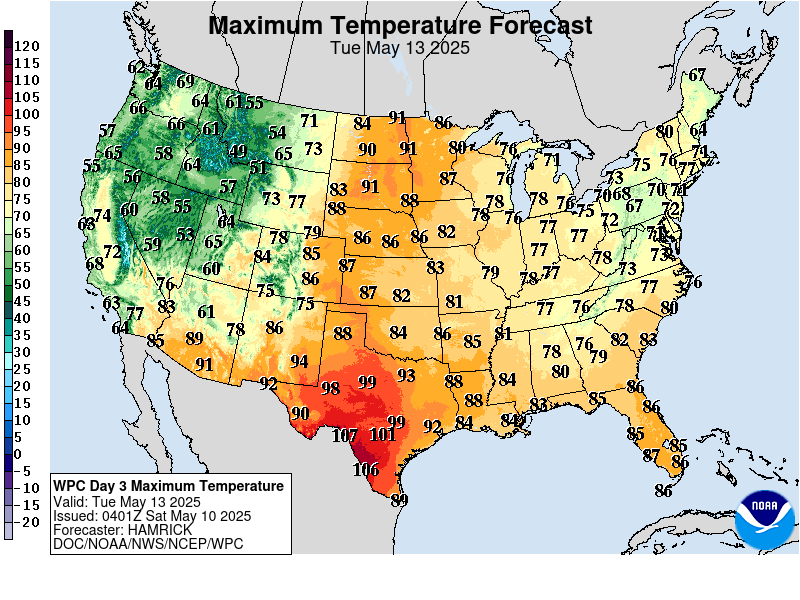
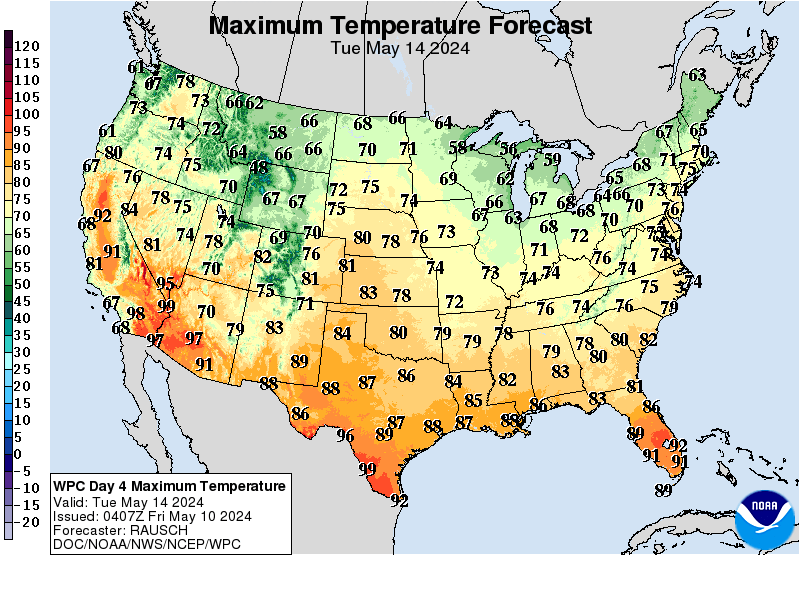
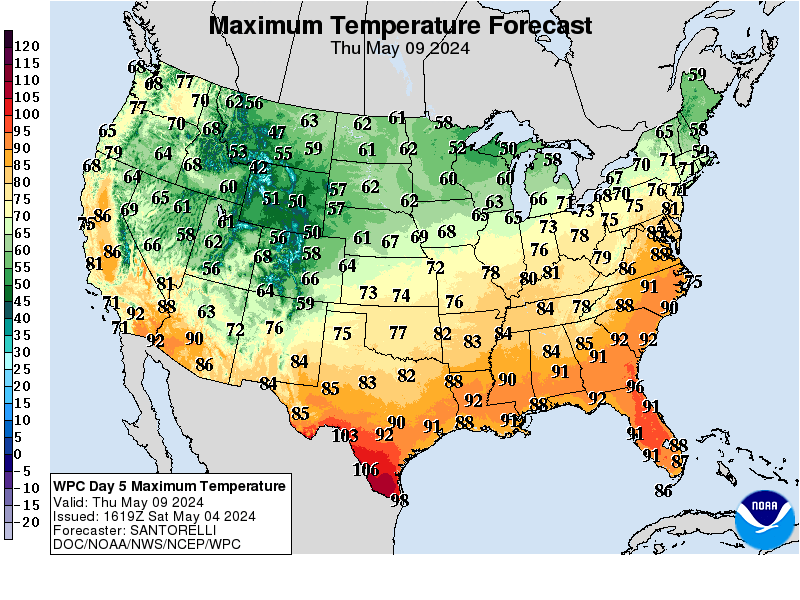
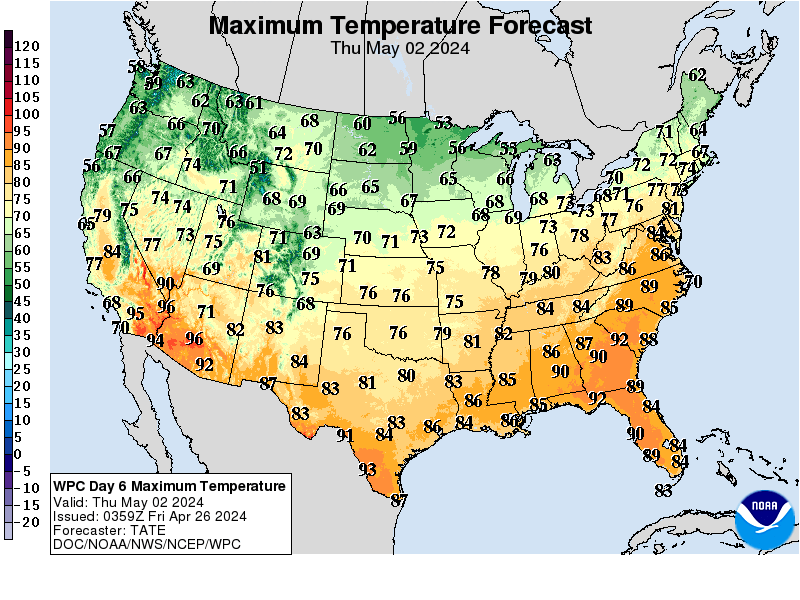
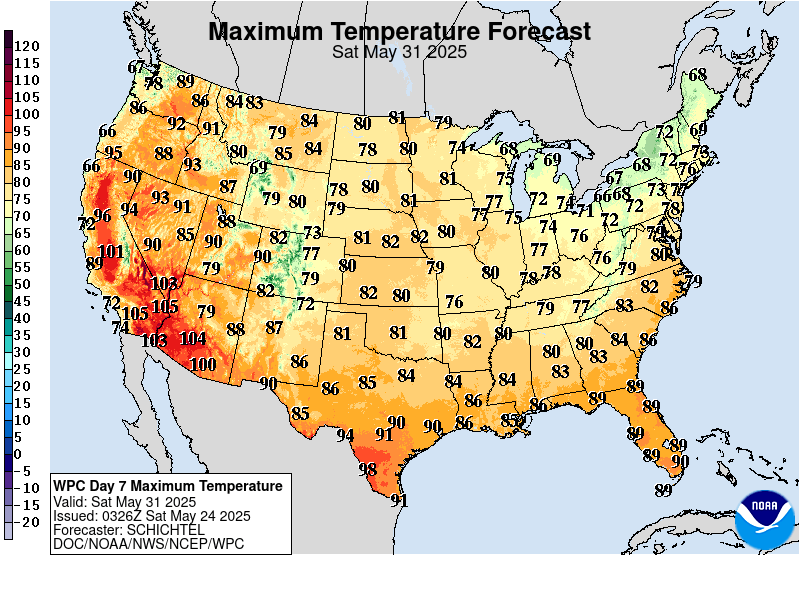
Average Temperature anomalies for days 3-7:
Above average south/east, Below average northern tier.
https://www.wpc.ncep.noaa.gov/medr/medr_mean.shtml
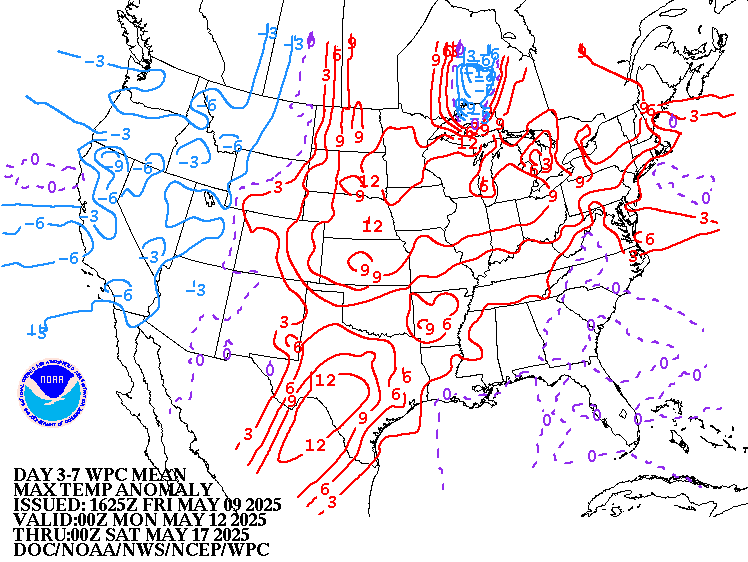
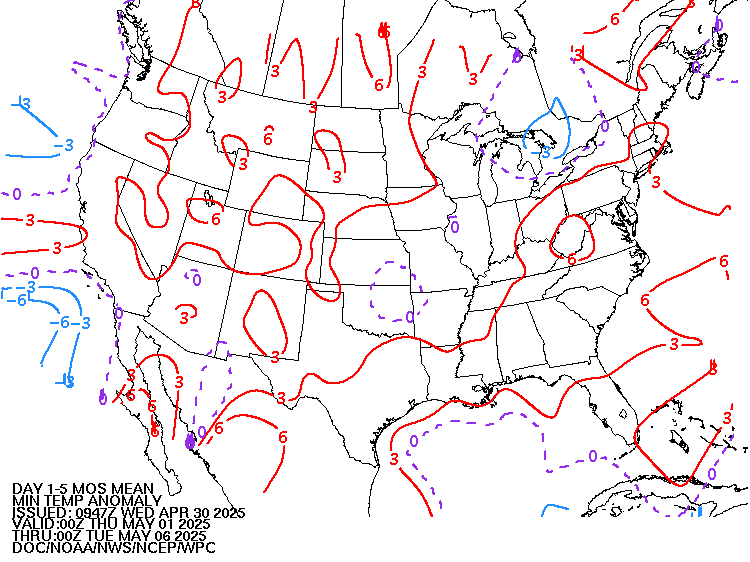
Weather maps for days 3-7 below
Front between very warm south/east and cool much farther north.
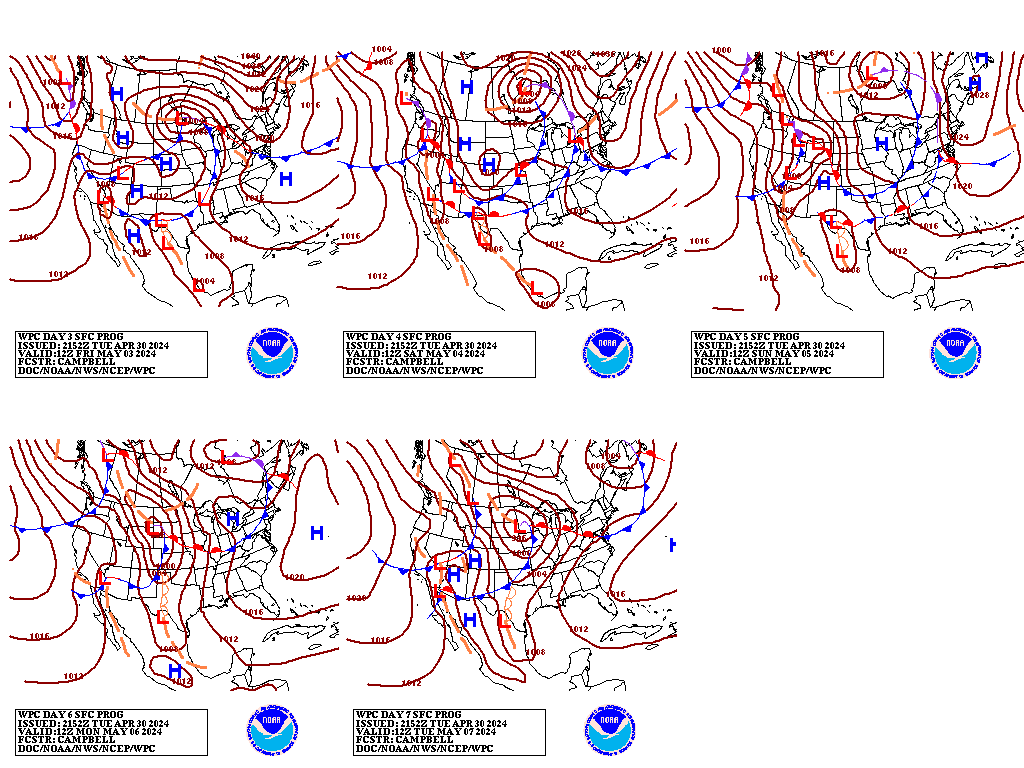
Last 24 hour precip top map
Last 7 day precip below that
https://www.wunderground.com/maps/precipitation/daily


Liquid equivalent precip forecasts for the next 7 days are below.
Heaviest rains in the south and eastern belt.
Day 1 below:
http://www.wpc.ncep.noaa.gov/qpf/fill_94qwbg.gif?1526306199054
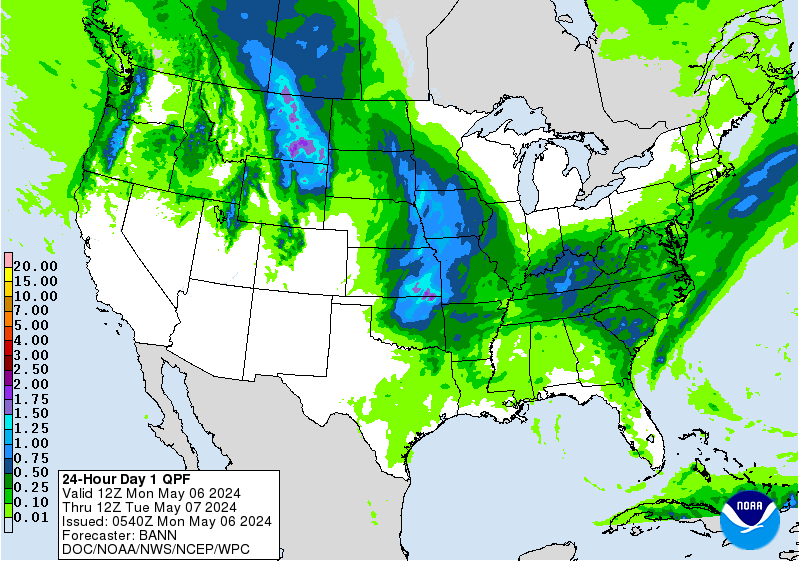
Day 2 below:
http://www.wpc.ncep.noaa.gov/qpf/fill_98qwbg.gif?1528293750112
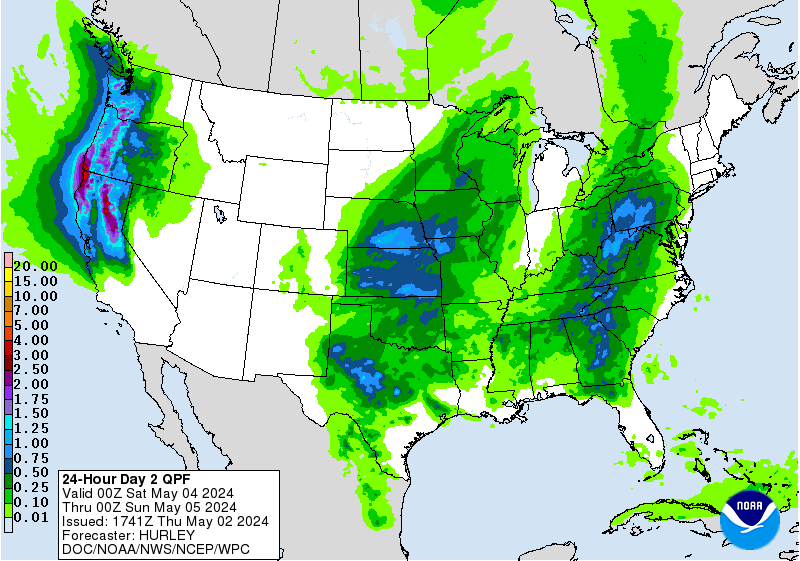
Day 3 below
http://www.wpc.ncep.noaa.gov/qpf/fill_99qwbg.gif?1528293842764
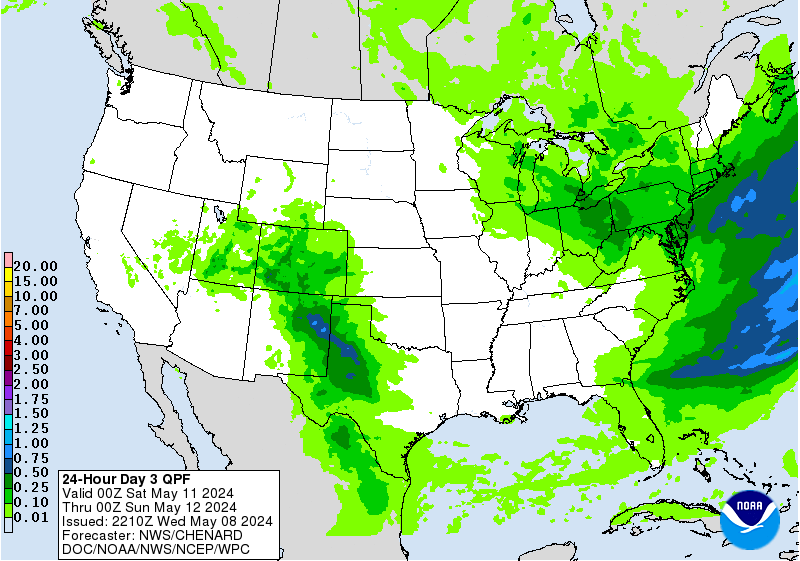
Days 4-5 below:
http://www.wpc.ncep.noaa.gov/qpf/95ep48iwbg_fill.gif?1526306162
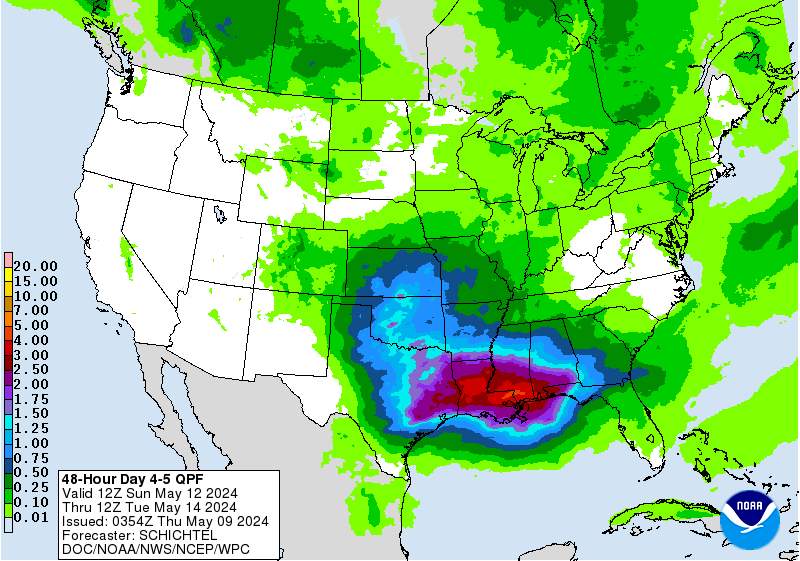
Days 6-7 below:
http://www.wpc.ncep.noaa.gov/qpf/97ep48iwbg_fill.gif?1526306162
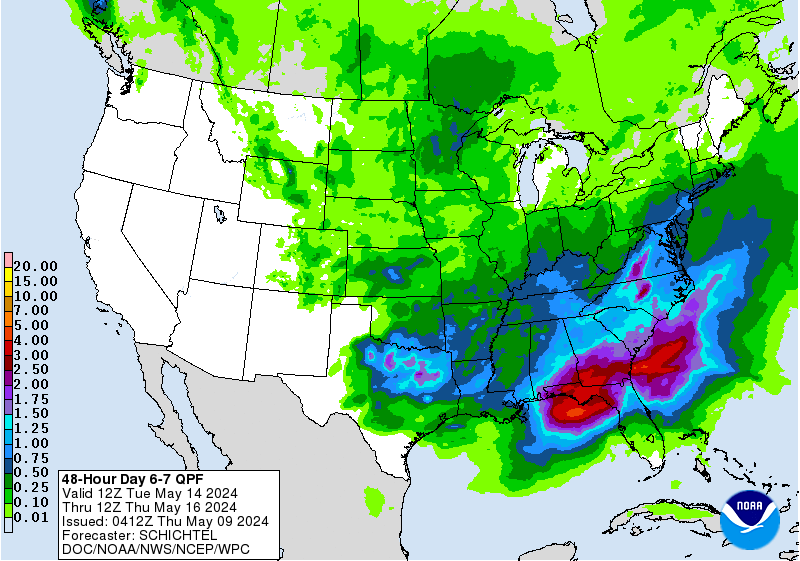
7 Day Total precipitation below:
http://www.wpc.ncep.noaa.govcdx /qpf/p168i.gif?1530796126
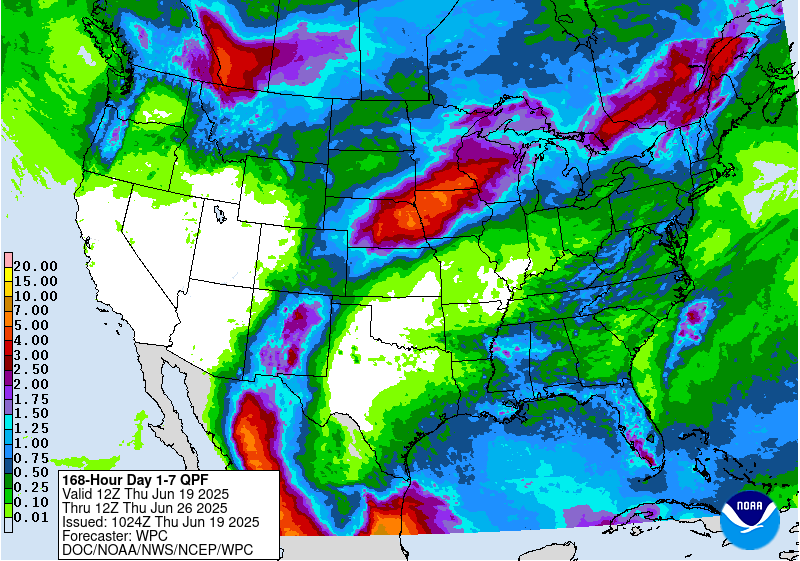
Excessive Rainfall Forecasts.
Mesoscale Precipitation Discussions
Current Day 1 Forecast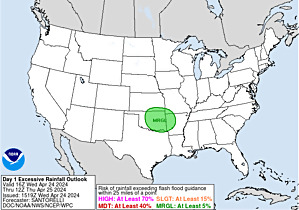 Valid 12Z 04/22/19 - 12Z 04/23/19 |
Day 1 Threat Area in Text Format
| Day 2 and Day 3 Forecasts |
Current Day 2 Forecast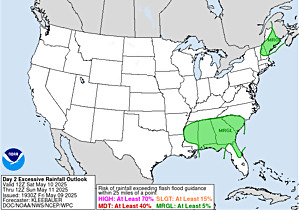 Valid 12Z 04/23/19 - 12Z 04/24/19 |
Day 2 Threat Area in Text Format
Current Day 3 Forecast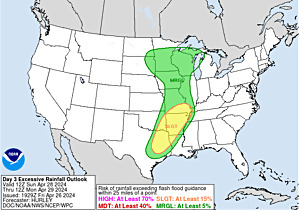 |
Severe Storm risk
Current Dew Points
Deep moisture is up to the Ohio River Valley.

Latest radar loop
http://www.nws.noaa.gov/radar_tab.php

| Full resolution version loop (3400x1700 pixels - 2.2mb) |

Go to: Most Recent Image
You can go to this link to see precipitation totals from recent time periods:
https://water.weather.gov/precip/
Go to precipitation, then scroll down to pick a time frame. Hit states to get the borders to see locations better. Under products, you can hit "observed" or "Percent of normal"
+++++++++++++++++++++++++++++++++++++++++++++++
Precipitation compared to average for the last 7, 14, 30 and 60 days.
IT DRIED OUT IN THE CENTRAL BELT BUT IT WILL GET VERY WET THERE THIS WEEK!
Usually not updated for previous day until late the next day.
https://www.atmos.illinois.edu/~snodgrss/Ag_Wx.html




Soilmoisture anomaly:
These maps sometimes take a day to catch up to incorporate the latest data. Still too wet over a large area.
It's getting wetter again in the East so planting stays stalled out in many places not planted yet.
https://www.cpc.ncep.noaa.gov/products/Soilmst_Monitoring/US/Soilmst/Soilmst.shtml#
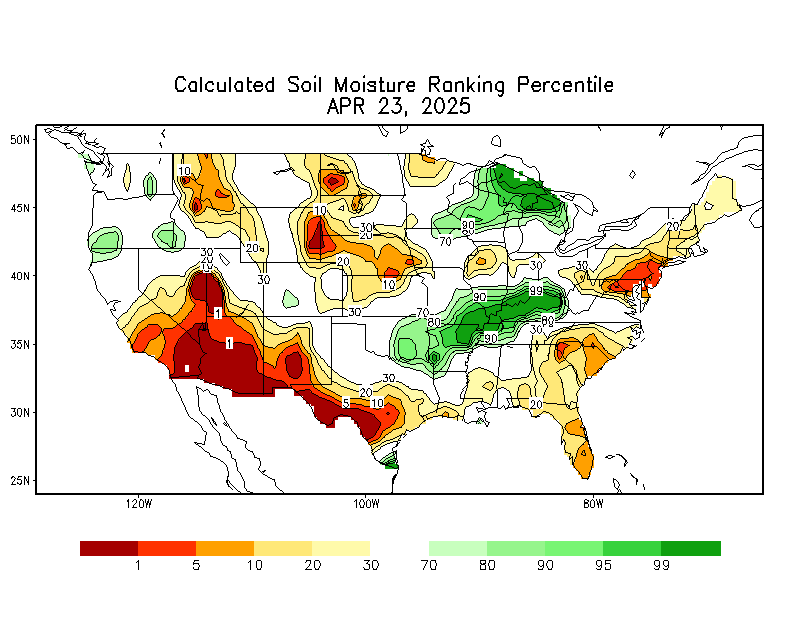
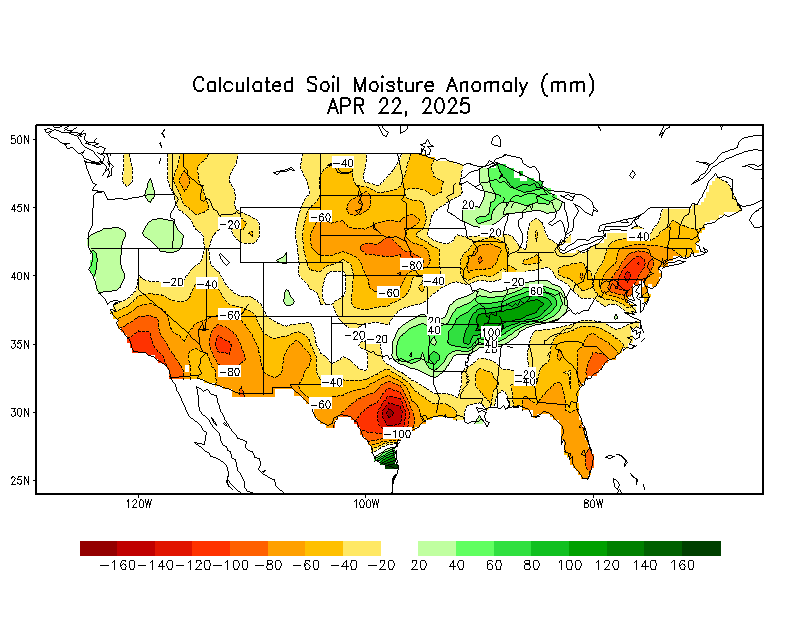
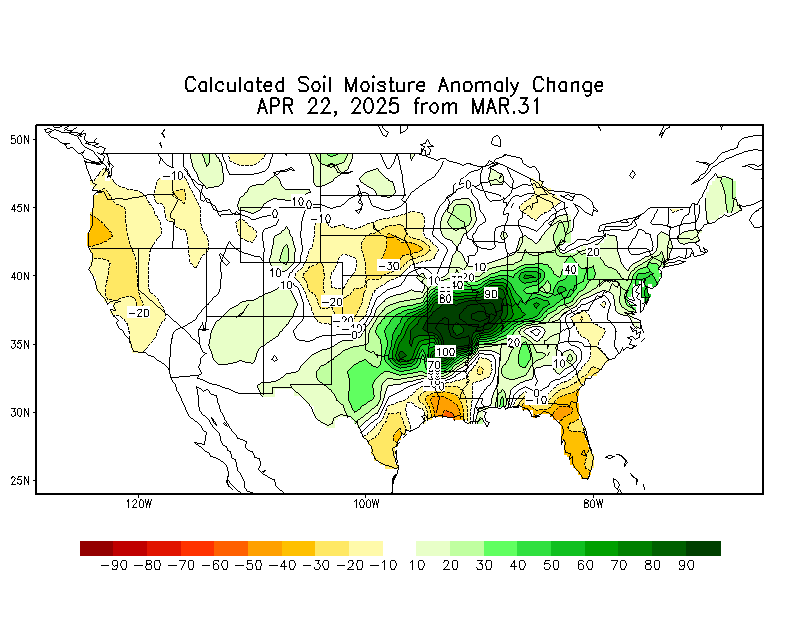
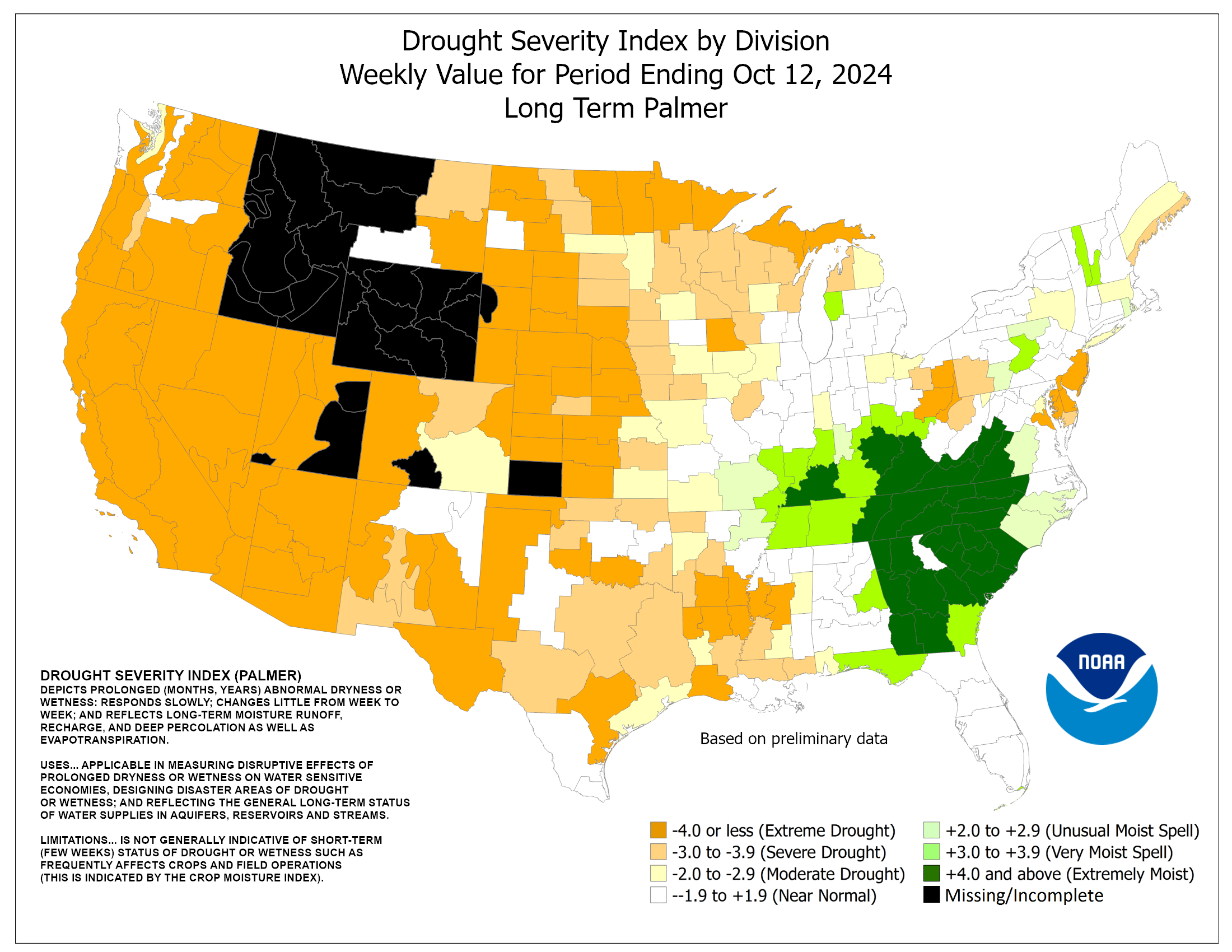
Currently, there is 0% of the Cornbelt/Midwest with drought. There is no place even slightly dry there.
The market will be keying on precip forecasts for planting concerns for the next month.
https://droughtmonitor.unl.edu/

The ideal time frame for planting corn is the next 2 weeks. The market will be scrutinizing the 2 week forecasts every day.
This operational GFS model product is updated every 12 hours. The GFS is updated every 6 hours.
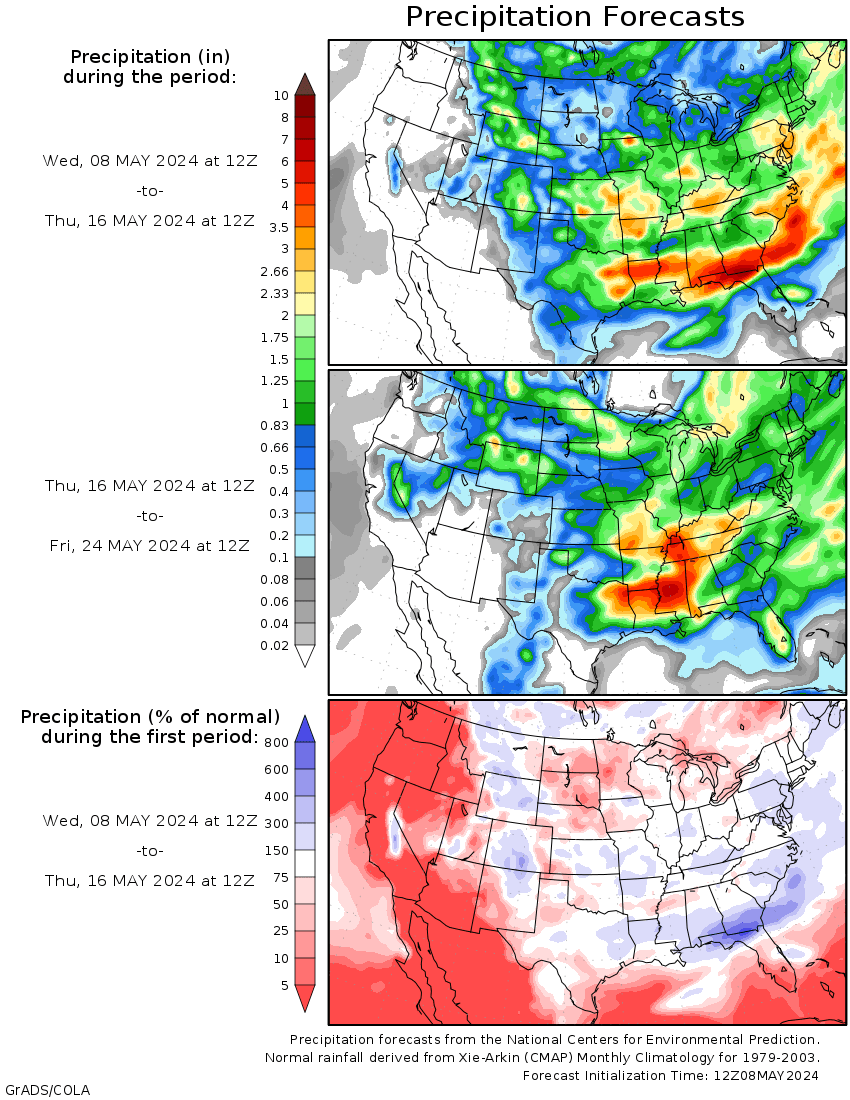
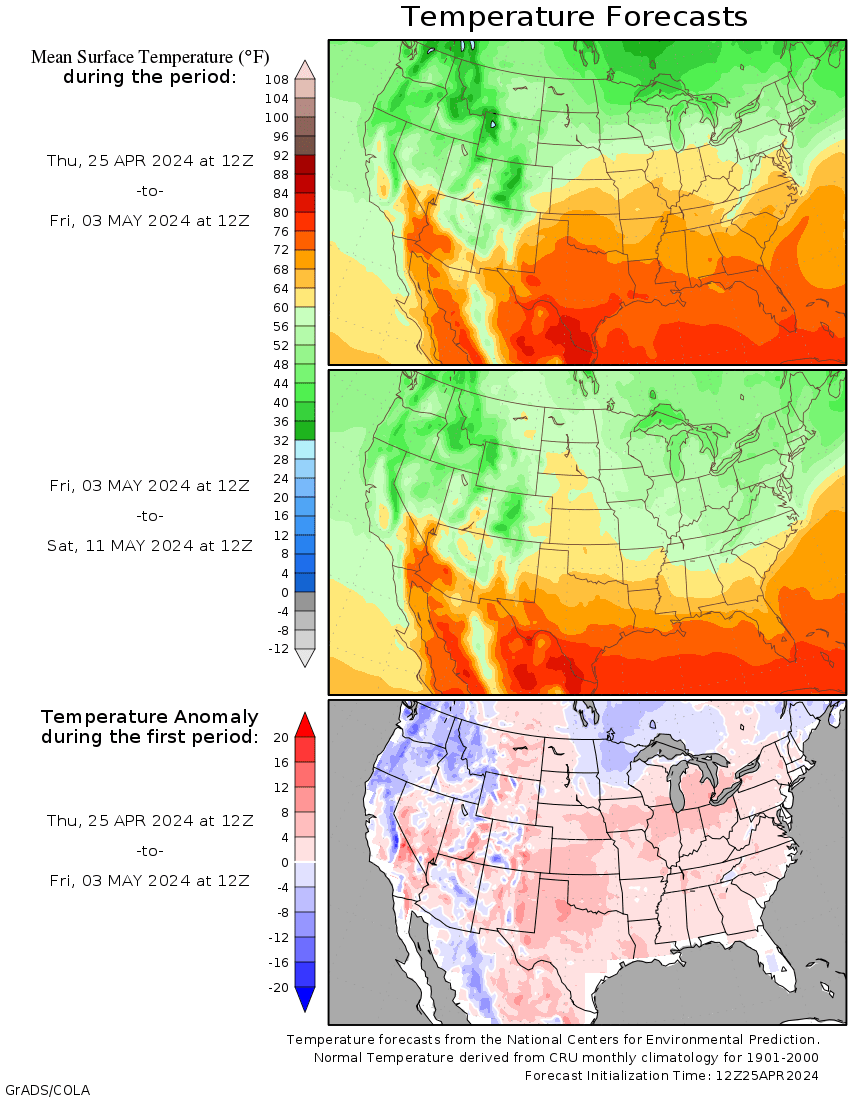
The top map is the Canadian ensemble average, the maps below are the individual members that make up the average at the end of week 2.
+++++++++++++++++++++++++++++++++++++++++
Each member is like the parent, Canadian model operational model.......with a slight tweek/variation in parameters. Since we know the equations to represent the physics of the atmosphere in the models are not perfect, its useful to vary some of the equations that are uncertain(can make a difference) to see if it effects the outcome and how.
The average of all these variations(ensembles) often yields a better tool for forecasting. It's always more consistent. The individual operational model, like each individual ensemble member can vary greatly from run to run.........and represent an extreme end of the spectrum at times. The ensemble average of all the members, because it averages the extremes.............from opposite ends of the spectrum.........changes much less from run to run.
End of week 2....................0z ensembles:
Analysis starting from a week ago, ending with today:
Last week+ of analysis, starting with the day farthest in the past. This is an end of week 2 forecast!
Last Monday: Much different picture with the Upper level trough.........on the mean farther west and MUCH less southern stream, especially for individual solutions. Instead of potentially turning much wetter, this solution leans to the dry side. It's 2 weeks out, so not surprising for changes.
Tuesday: Around half the members look impressive with a southern stream trough in the Southwest with the energy aimed northeast. Several have almost the opposite solution. So it would get very wet............or be dry.............leaning wet.
Wednesday: Stronger northern stream, cooler temperatures, especially northern half. Potential for potent southern stream but where will it be aimed? Looks like a bit farther south today, being diverted by northern stream energy to the north.
Thursday: Battle between southern stream and northern stream. Great uncertainty late in week 2, after a very wet period preceding it.
Friday: Same northern stream and southern stream battle with a very wet period until we get well into week 2, then great uncertainty.
Saturday: The mean/average map below looks zonal because the average of some opposite extremes cause it to be that way. Less southern stream on the individual solutions today though and less threat for heavy rains now in week 2 and just afterwards.
Saturday: 12z run at the top here, looks a bit wetter than the 0z run below.
Sunday: Lots of uncertainty but this mornings mean shows the upper level ridge in the Southeast more prominent for the 2nd solution in a row. IF there is an upper level ridge in that position, the chances of very wet weather in the mid section of the country go way up. That feature will act in tandem with an upper trough upsteam in the Southwest to steer a southern stream aimed at locations between them, along with southerly winds on the backside of the high transporting juicy Gulf air northward.
Monday: Similar to yesterday for the mean/average..............wetter than average but some extreme differences in individual solutions. That wide spread causes uncertainty.
Tuesday: Doesn't look as wet to me..........with the southern stream and heaviest rains aimed father south today and well south of the Corbelt for the really heavy stuff.
Wednesday: Looks pretty wet on this model, especially south.
Thursday: Still wet BUT more zonal flow vs southwest flow which has the potential to dry things out more......at least end the threats of excessive rain events as we get more progression.
360h GZ 500 forecast valid on May 17, 2019 00 UTC
0Z GFS Ensembles at 2 weeks:
Analysis, starting with the oldest, ending with the most recent:
Last Saturday: Watching to see if more solutions on this model amplify the southern stream similar to the Canadian ensembles. Some show the potential for this.
Sunday: This model does not look that wet at all. In fact, much of the belt is pretty dry and very warm. Most solutions don't have much southern stream.
Monday: Warm and dry under the upper level ridge in the South to points outward still under its protection. Some wetness around the periphery, just out side of that protection.....Upper Midwest/Plains?
Tuesday: Cut off upper level low to deep trough in Southeast Canada will help some cold fronts to push south of the border. Watching the Southwest US for stronger signal on southern stream.
Wednesday: Battle between northern stream with cool air in the northern US and southern stream with moisture and the threat of excessive rains from the south.
Thursday: Southern stream looks stronger/wetter.
Friday: For sure a very wet period leading up to late week 2, which is the period for these maps. Will it continue?
Saturday: This model still looks pretty wet late in week 2 on many of the solutions.
Sunday: Majority look wet. Biggest disparity, especially in the East.
Monday: Looks pretty wet with an upper level ridge in the Southeast and trough in the West with some southern stream..........on many solutions.
Tuesday: Much drier today. Not as many solutions with much southern stream. Almost half of them shut it down completely.
Wednesday: Half of the solutions have a very wet southern stream, especially in the S.Plains. The ensemble mean for the European model, however is MUCH drier than this.
Thursday: Upper level low in Southeast Canada a dominant feature on many solutions means chilly weather in the Northeast to Midwest..........cutting off the deep moisture so precip not as heavy there.

Ensemble mean(average of all the individual solutions above)
Last Monday: Modest positive anomaly for upper level heights most places again but the negative anomaly in Southeast Canada is enough to potentially drive down some cooler air on its backside into the Upper Midwest and Northeast.
Tuesday: Negative anomaly in Southeast Canada will push some cool air into the Upper Midwest/Northeast from the northern stream. This could suppress the southern stream farther south...........or, if that is strong enough, the southern stream may send moisture into the cooler air from the northern stream. Upper level ridging in the South will cause it to be warm there.
Wednesday. Negative anomaly in Southeast Canada will be steering northern stream chilly air south of the border. Positive anomaly center shifted to Southwest Canada helps establish a bit of a couplet, as well as positive anomalies farther north. How much will this suppress the potent/wet southern stream coming from the Southwest upper level trough and potential El Nino energy from the tropical Pacific?
Thursday: Similar to yesterday. Cool air from the northern stream in Northeast and Midwest from the negative anomaly in Southeast Canada but a potent southern stream that doesn't show up well in these anomalies will aim energy/moisture towards the Plains/Midwest.
Friday: Positive anomaly in N/C Canada and negative anomaly in Southeast Canada is a cold couplet dynamic for much of the Midwest and East. How much southern stream moisture pushes into that is not clear late in week 2. The northern stream could suppress the deeper moisture pretty far southwest.
Saturday: Anomalies are weaker today. Still the negative one Southeast Canada, so chilly in the Upper Midwest/Northeast.
Sunday: Strong positive anomaly in the East today that was not there yesterday suggests very wet Plains/Midwest with potent southern stream aimed in that direction. There were a couple of extreme individual solutions that contributed to the positive anomaly though, so the majority don't concur.
Monday: Positive anomaly in the East not as strong but the negative anomaly in the Southwest is significant for modulating the southern stream which should be aimed toward the Plains/Midwest.
Tuesday: No positive anomaly in the East today, so less ridging there, so the negative anomaly in the Southwest doesn't have the couplet connection to steer moisture as strongly northward into the Plains/Midwest. Negative anomaly in Southeast Canada should help steer some northern stream chill south of the border.
Wednesday: Positive anomaly over the Great Lakes today. Still a negative anomaly over the Southwest.
Thursday: Positive anomaly over Northern Canada good for cool nothern stream connection below it. Still a negative anomaly over the southwest associated with the southern stream...........which may get suppressed a bit by the northern stream.
Latest, updated graph/forecast for AO and NAO here, including an explanation of how to interpret them.
Previous analysis, with the latest day at the bottom for late week 2 period.
Monday: NAO dips negative and is a factor in potential cooling in the Upper Midwest/Northeast.
Tuesday: Negative NAO will steer some cooler air into the Northern Tier. Also a negative PNA, so the cool air will not go to far south.
Wed: Negative NAO will brings cooler northern stream energy/air masses into the Northern tier. How far south can it divert the potent southern stream? The cool air from the north, will probably be overlapped by the moisture coming up from the south in the battle zone between the northern stream and southern stream.
Thursday: Negative NAO and cool along the northern tier. Also a bit of a negative AO and positive PNA can potentially assist in that cooling......during week 2 but tremendous uncertainty late in that period.
Friday: Negative AO and especially negative NAO strongly favor chilly air pushing south out of Canada. PNA increases late in the period that favors that, with potential to shut down the moisture.
Saturday: AO recovers back to near 0. The pretty negative NAO, bounces back to 0 at the end of 2 weeks. PNA increases a great deal into positive territory at the end of 2 weeks.
Sunday: AO around 0, NAO rebounds from negative to near 0 at the end of week 2 and PNA turns positive.
Monday: AO now drops below 0. NAO recovers from negative territory to near 0, same with PNA.
Tuesday: AO drops well below 0. NAO recovers from negative to near zero, same with PNA.
Thursday: Solidly negative AO and NAO forbode some late season chilly weather south of the Canadian border. PNA close to 0.
National Weather Service 6-10 day, 8-14 day outlooks.
Temperature Probability | |
Precipitation Probability | |
| the 8-14 day outlooks ArchivesAnalogsLines-Only FormatGIS Data | |
Temperature Probability | |
 | |